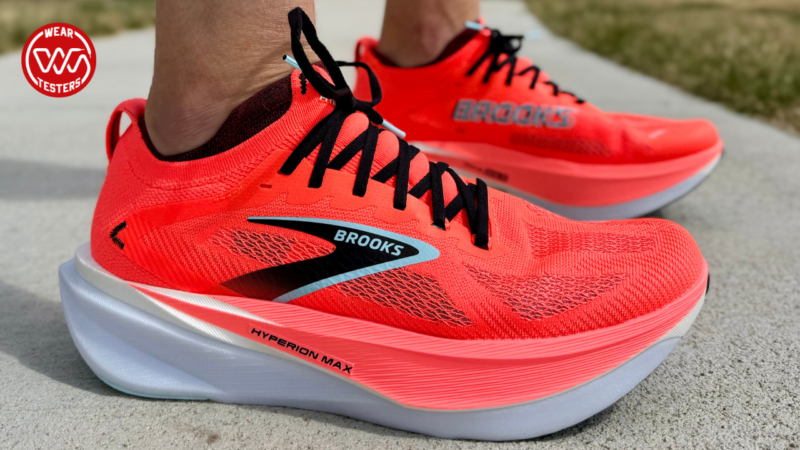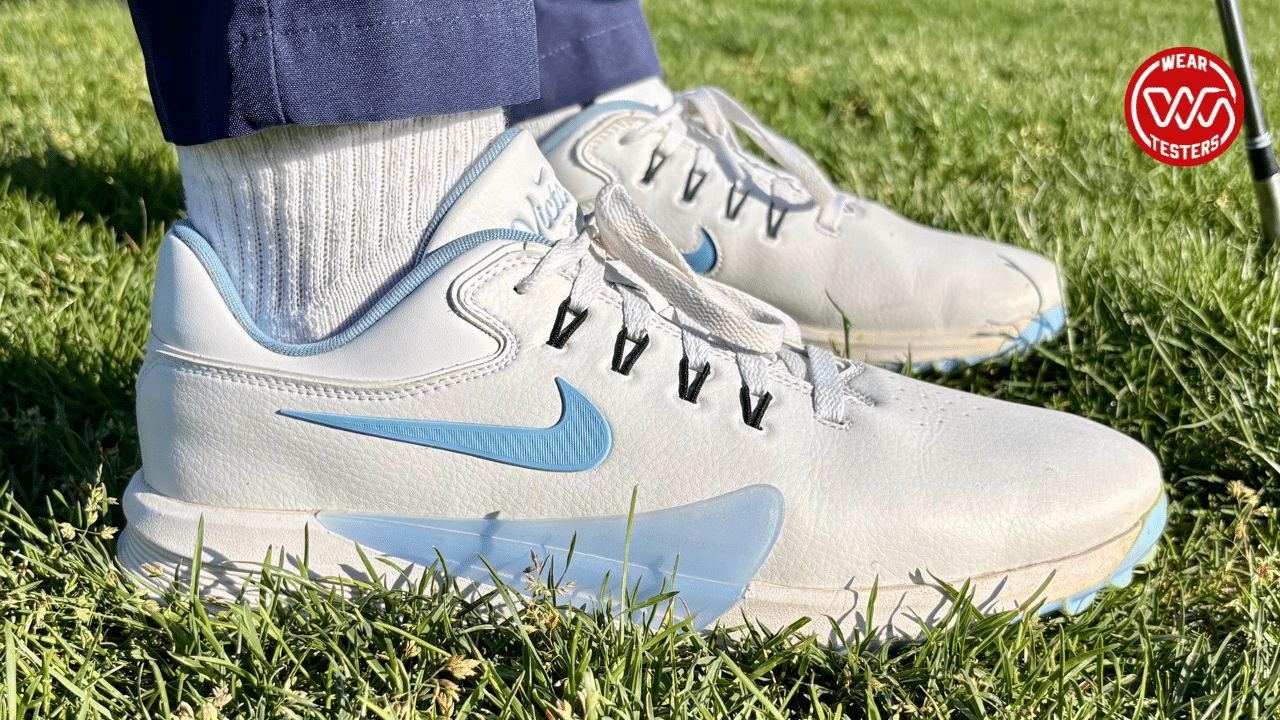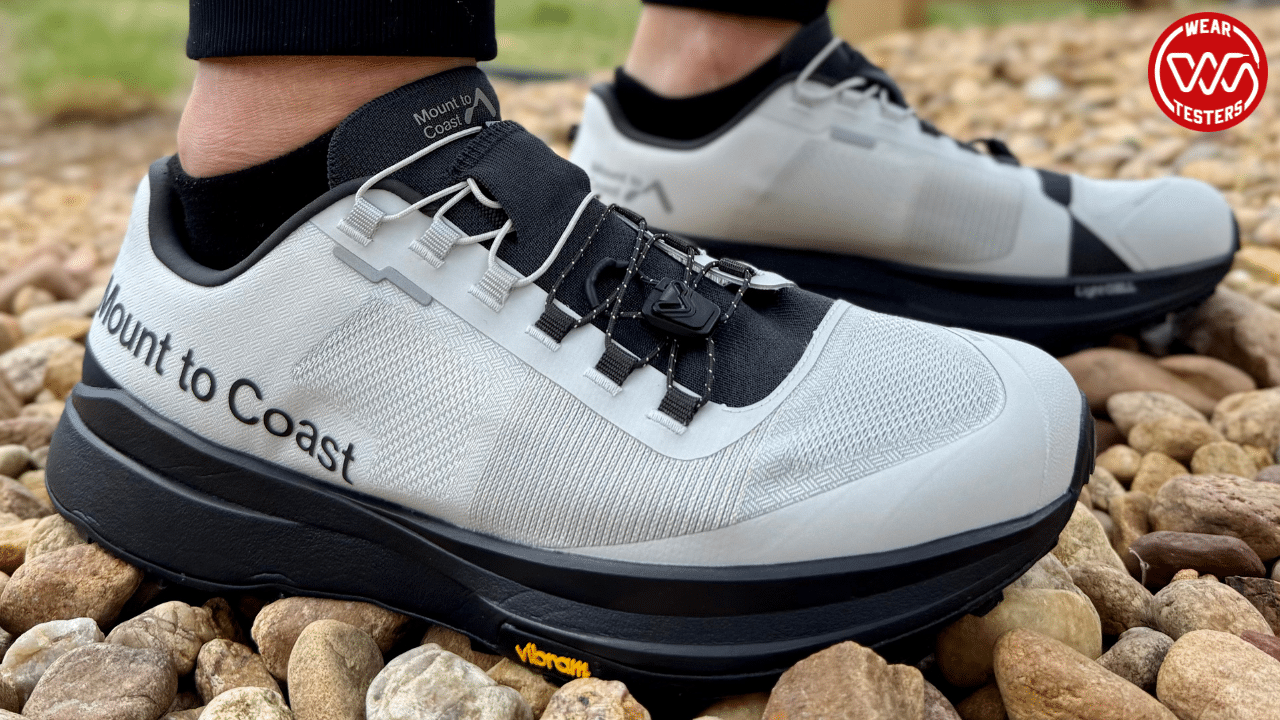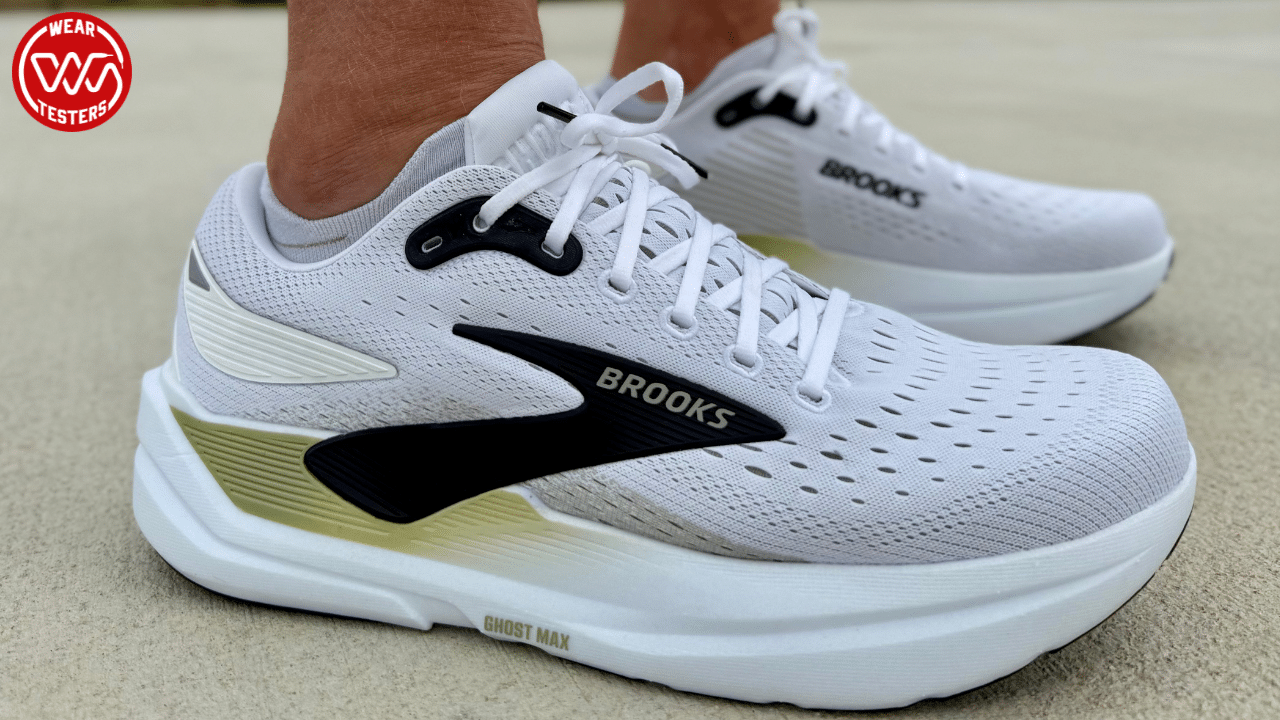We’ve recommended the Brooks Hyperion Max 2 to a lot of people, and they all ended up loving it. But running shoe geeks didn’t always love the firmness. Can the Brooks Hyperion Max 3 offer the best of both worlds…a shoe to unite both those plugged into the running shoe industry and more casual runners? Let’s find out.
Brooks Hyperion Max 3
Release Date: July 1, 2025
Price: $200
Men’s Weight: 9.9 oz. / 281 g
Women’s Weight: 8.8 oz. / 250 g
Drop: 6mm (46mm heel, 40mm forefoot)
Sizing: True-to-size
- Rundown: The Brooks Hyperion Max 3 is a long-run ready super trainer with an all-new cushioning setup that takes the shoe to the next level of underfoot comfort and response.
Pros
- Plush but bouncy DNA GOLD/SpeedVault plate combo
- Smooth transitions with RapidRoll Rocker geometry
- Stretchy, comfortable sock-like upper
- Heel and tongue padding
- Highly breathable
Cons
- Outsole durability
- Midfoot tightness
- Weight
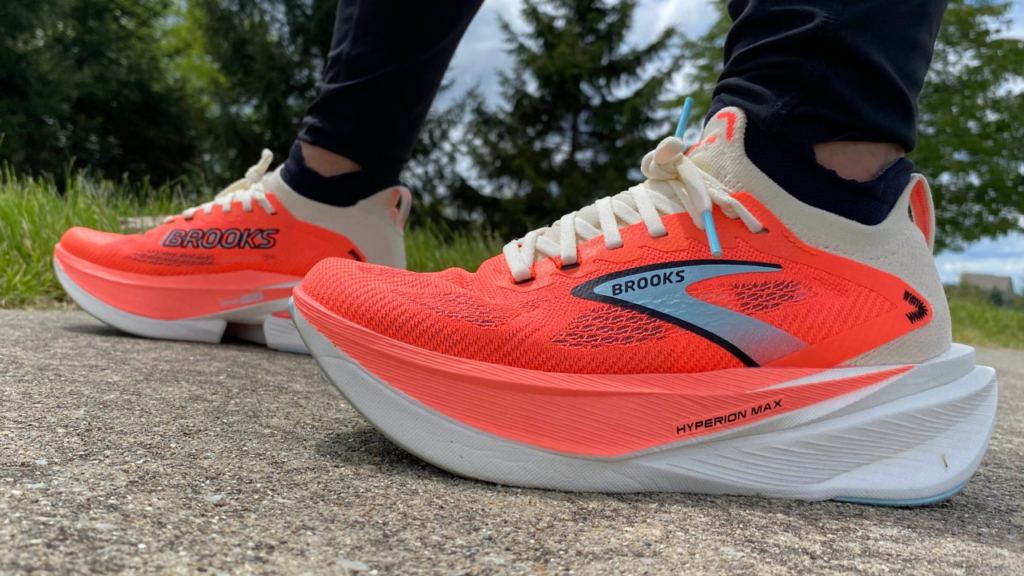
What is the Brooks Hyperion Max 3?
According to Brooks, the Hyperion Max 3 is for “runners looking to optimize their training journey so they can run fast on race day. The Hyperion Max 3 is built to deliver speed and protection with DNA GOLD cushioning, RapidRoll Rocker, and a strategically constructed midsole, suited for workouts ranging from track work to long runs.”
This description is light on the marketing speak and mirrors a fairly standard description of a super trainer. Maybe it’s a little heavier, but it’s easier on the legs while still promoting speed. A super trainer should be a fast, versatile, and protective shoe that makes training feel more luxurious than race day, and I think Brooks nailed it with this description. Let’s find out if the Hyperion Max 3 can live up to these lofty standards.
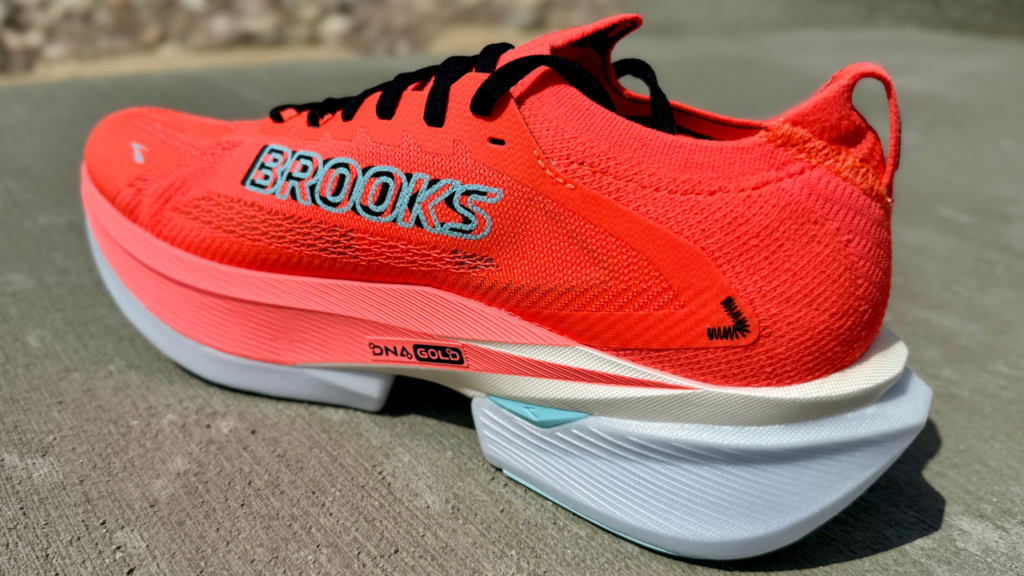
Cushion
Drew: I liked the Hyperion Max 2, but it was a little firm for anyone that’s on team soft squad. While I found it a good long-run shoe, there were others who didn’t want to take it out for double-digit runs.
But I think many of those runners will change their tune with the Brooks Hyperion Max 3. The 100% PEBA DNA GOLD top layer of the midsole offers some impressive softness alongside A+ energy return.
The SpeedVault plate in the middle is propulsive but not too stiff. I found it the perfect balance for training so that I could save stiffer carbon plates for race day.
And the bottom layer of DNA FLASH v2 (which was the entire midsole of the Hyperion Max 2) is sturdy while still providing energy return and helping enhance that RapidRoll Rocker geometry. Shoes with DNA FLASH v2 really move through heel-to-toe-to-air transitions quickly, and its inclusion here as the bottom layer provides similar results.
The Brooks Hyperion Max 3 has a big, beefy midsole when all those layers are combined…so big it won’t be for everyone… But it was perfect for my 6’6” 200-pound frame. The 46mm heel stack height seems exceedingly tall on paper but provided the right mix of impact protection and bouncy goodness when I was on runs.
And that midsole makes this shoe extremely versatile in the mold of the original super trainer, the New Balance SC Trainer. The Hyperion Max 3 was solid on recovery miles, great on pick ups in longer runs, and an absolute dream for long runs. Long runs are hard on my body, and I felt the Hyperion Max 3’s midsole made it easier to recover and get onto the next run. It’s both a fun shoe and a valuable shoe to have in my rotation.
But I’m interested to see how this midsole performed for my markedly smaller counterpart.
Annie: As Drew hinted, our size difference often results in contrasting experiences with the same running shoe. For example, my immediate thought when pulling the Hyperion Max 3 out of the box was, Oh no, it feels way heavier. As someone who loved the Hyperion Max 2, this had me worried.
The added weight was most apparent during my first 20-30 miles of testing the shoe and especially at recovery paces. The bounce that resulted from putting more force into the midsole when running faster efforts helped to overcome the mild sense of bottom-heaviness. After those initial runs, the shoe also molded around my foot more and felt better connected all the way around. But even after 50 miles of testing and plenty of uptempo miles mixed in, I can’t say the weight went unnoticed.
But back to the actual midsole…
First thing’s first: don’t lace up the Hyperion Max 3 expecting it to feel like the Hyperion Max 2.
This is not only a completely different foam setup; there is also a whopping 10mm of additional stack height compared to last year’s version (which is presumably the main cause of the weight increase). All of which is to say, the ride experience is just totally different.
Like Drew, I found the dual-density cushioning and SpeedVault plate to be a great combo. It still resists the ultra squishiness of the softest formulations of 100% PEBA-based midsoles thanks to that bottom layer of DNA FLASH v2 and is also more compressible underfoot than DNA FLASH v2 alone could ever be. It makes for a ride that is well-balanced: you get a forgiving, protective feel coupled with a bouncy, quick turnover.
The recognizably smooth RapidRoll Rocker from the Hyperion Max 2 remains though is perhaps a touch less snappy in this midsole configuration.
But if I were focusing purely on the feel of the midsole (or even the upper, which we’ll get to shortly), I wouldn’t necessarily think this shoe was the immediate descendent of the Hyperion Max 2.
With the Hyperion Max 2, I felt like it got most of its magic from that snappy rocker geometry and firmer midsole. Whereas the Hyperion Max 3 brings the foam compound(s) more to the forefront. The geometry still feels efficient, and I love the cutout at the medial midfoot to help mitigate the thick stack. But the midsole materials are ultimately what shine here, offering more bounce and softness alongside the response with a quick and smooth – but somehow also unhurried – feel.
This meant that the Hyperion Max 3 was best suited for long runs and especially long runs with lots of miles at marathon and perhaps even half-marathon pace. It also has the advantage over its predecessor when it comes to handling easy paces in easy fashion. What it lost for me when compared to the Hyperion Max 2, however, was its prowess at the faster end of the spectrum. I readily used the Hyperion Max 2 for interval workouts, for example, but I wouldn’t much enjoy the Hyperion Max 3 in that capacity (aaand…that brings us full circle once again to the weight).
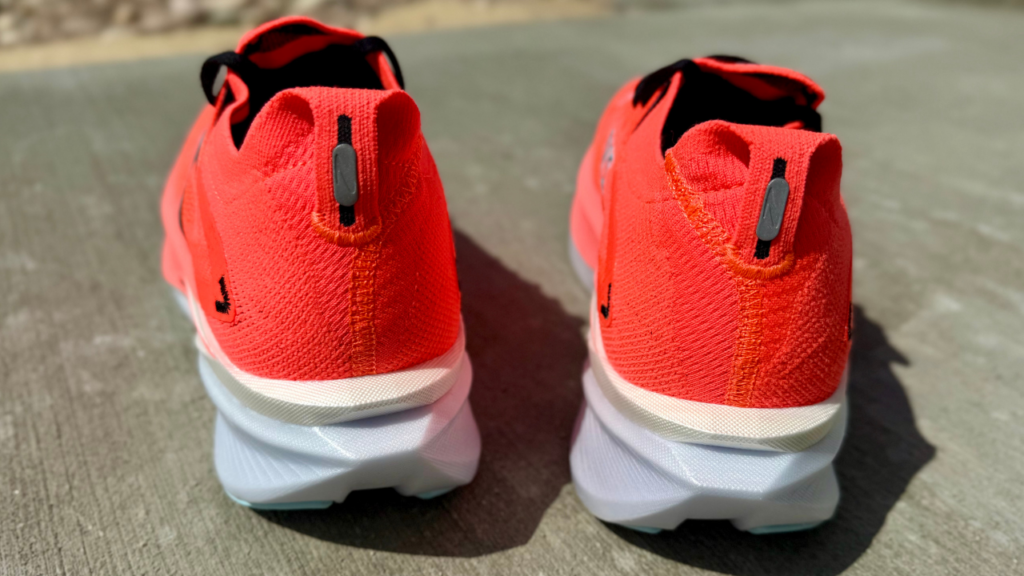
Support
Drew: The Brooks Hyperion Max 3 gets its support from a beefy heel counter, natural outriggers built into the midsole at the heel and forefoot, a well-fitting upper, and the bottom layer of DNA FLASH v2. It’s a tall and beefy shoe with a knit-like upper, but my foot never left the safe confines of the footbed. It corners well and will be plenty stable on most types of pavement.
That said, this shoe is still really tall. Paths with lots of broken pavement or asphalt, or any type of offroading are asking for an ankle sprain. The foot is just too far off the ground without a ton of groundfeel. It’s perfect for a long-distance run on reliable surfaces…but not great for more dubious options.
Annie: I couldn’t agree more here. The fit of the upper, the hella stiff heel counter, and the way the midsole flares both laterally and medially through the forefoot kept me feeling super secure insofar as my foot’s connection to the shoe.
But it’s the connection to the ground that’s missing, along with part of the midsole where there’s a medial cutout, leaving me uneasy about recommending the Hyperion Max 3 for those who have especially iffy ankles or actual stability needs that go beyond the solid fit of the shoe.
I’ll note that this isn’t a shortcoming unique to Hyperion Max 3. Like Drew said, anytime you get a stack height this considerable, there are bound to be some natural sacrifices. So just know your own needs, keep the Hyperion Max 3 to trusted surfaces, and you should be in pretty good shape.
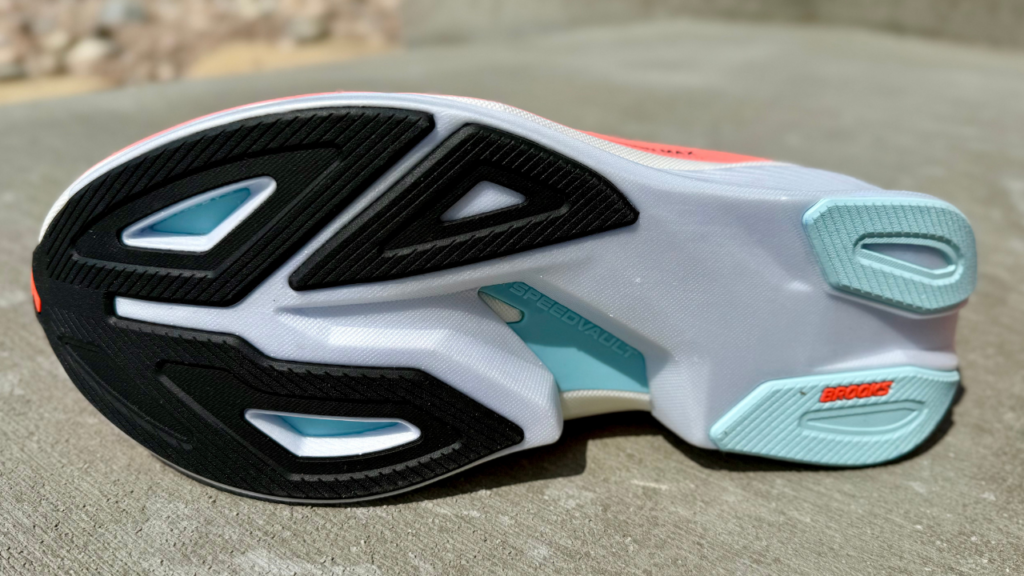
Traction
Drew: Granted, I’ve worn the Brooks Hyperion Max 3 a ton during the test period – well over 50 miles thanks to several looooong long runs during my marathon training block. But I quickly shaved off the forefoot traction pattern. The outsole rubber’s fairly thick so it’ll still last and grip, but it won’t be a shoe whose outsole lasts outside the norm. I’d expect 300+ miles, but I can’t see it lasting to 500 or above.
The rubber itself grips pretty well, but the three forefoot cutouts plus the big midfoot cutout do create a few less reliable traction areas. While these cutouts save weight, I did occasionally get some slippage from those areas. It was never much slippage, as the shoe would eventually catch the ground, but it was annoying on wetter, nastier days.
Annie: The weather in my region was unusually dry while testing the Hyperion Max 3, so I didn’t get to put the outsole through much in the way of wet conditions. But I didn’t have any difficulty over typical road surfaces (sometimes covered in grass clippings) on those dry days. The grip was also solid over a smooth, finely-ground gravel path and packed dirt.
Mildewy and mossy surfaces led to a few moments of uncertainty though – in my case due to where the rubber is absent at the midfoot. It wasn’t a disastrous amount of slip by any means, and I’m perhaps more forgiving of the reduced rubber as someone who doesn’t want to see the shoe get any heavier. But it did mean the Hyperion Max 3 wouldn’t be my first choice if I expected a lot of those messier types of surfaces along my route.
As for durability, I don’t usually see anywhere near the same amount of wear on my outsoles as Drew. But I am seeing a similarly quick wearing down of the finer details of the forefoot traction pattern in this case. There is still plenty of rubber left, but the pattern itself started to smooth out more rapidly than expected.
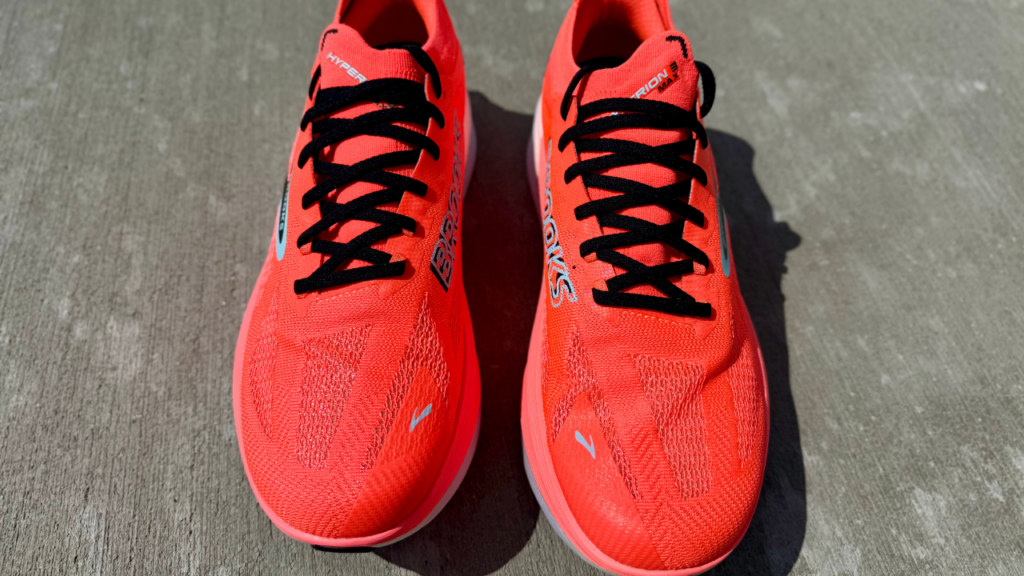
Upper
Drew: Usually Brooks calls an upper like this StealthFit, the in-house moniker for a knit upper. While the marketing team is not using that naming for the Hyperion Max 3 (perhaps due to the mesh bits at the forefoot), if you’ve tried a Brooks StealthFit shoe, you’ll get a similar fit here.
There’s plenty of breathability from wide airholes up front and lots of heel and tongue padding making it very comfortable. But the midfoot is TIGHT. Tighter than I’d expect from a Brooks shoe. I likely end up filling that midfoot more than others might due to my high instep, but that doesn’t happen in other Brooks shoes.
Wide and tall footers should be careful. There’s plenty of room for the toes up front, but the midfoot and heel aren’t as accommodating as expected. Make sure you buy from somewhere with a good return policy like Running Warehouse.
Annie: (For now) setting aside the shockingly tight midfoot…
I liked this upper from a materials standpoint. The airy mesh portions and well-placed padding throughout the knit portions made for a breathable, flexible feel that also didn’t skimp on comfort. I was initially concerned about the tongue and heel padding potentially running warm, but the rest of the upper compensated nicely.
I ended up loving the (albeit very) snug hug over the top of my foot despite my also relatively high instep and appreciated the slimmer heel for the sake of lockdown.
But let’s talk more about the width…
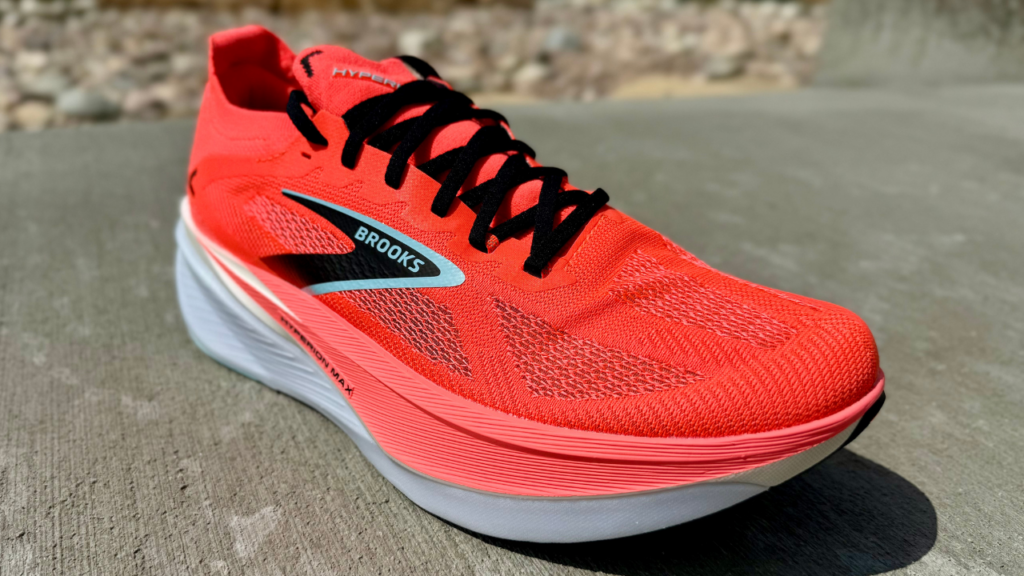
Is the Brooks Hyperion Max 3 wide foot friendly?
Drew: As I mentioned in the upper section, the Brooks Hyperion Max 3 has room up front for some toe splay but, depending on your foot shape, can be tight around the midfoot and heel. Some wide-footers will find the fit accommodating enough, but others won’t be able to make it work. A lot will depend on how well the upper stretches where your foot is at its widest (or tallest).
A try-on at the local running store or ordering from somewhere with a great return policy are probably the best route to take if you have a wide foot. But before you skim on, read Annie’s take. Her feet can often spot even the smallest discomfort when it comes to a shoe being wide-foot ready.
Annie: This is Drew’s incredibly respectful way of saying I have funny little triangle feet that gradually widen from an average-to-narrow-ish heel toward a wider forefoot. And that gradual widening sometimes allows me to more readily feel – for better or worse – where a shift in available width happens in a shoe.
And while, as noted above, I didn’t mind the snug-fitting height of the Hyperion Max 3’s upper, the lack of width was noticeable. The place I felt it most was through the ball of the foot, right where my feet proceed to widen into the toes. It was particularly pronounced on the lateral side.
It’s a bit of a shame, as there is technically enough foundational width available on the midsole platform below (via the natural outriggers we mentioned earlier that aid with support). The upper’s construction is just set farther inward and in somewhat shallow fashion, reducing the amount of width and volume available for the foot. Though, in fairness, I suppose if we widened and deepened the upper there, we’d in effect be stealing from the effect of the platform’s support…sooooo…
It ultimately seems like somewhat of a catch-22 in that the StealthFit-esque approach to the upper requires a certain degree of snugness for it to do its job of holding the foot in place; and perhaps it couldn’t do that quite as effectively – especially for narrow-footers – if designers gave the upper the larger interior dimension needed for some wide-footers.
I even swapped into the Hyperion Max 2 at the end of one test run for direct comparison (and to fact check my memory). The Hyperion Max 2 did taper at the midfoot on the medial side, but it was much more accommodating at the lateral midfoot and decidedly more so from the ball of the foot forward to the toes compared to the general tightness of the Hyperion Max 3.
As it is, Drew’s advice is very sound. Some wide-footers will be okay with this snug fit due to the material(s). I was comfortable enough on runs of up to around two hours, for example. But it wasn’t ideal, and it’s not going to work for everybody.
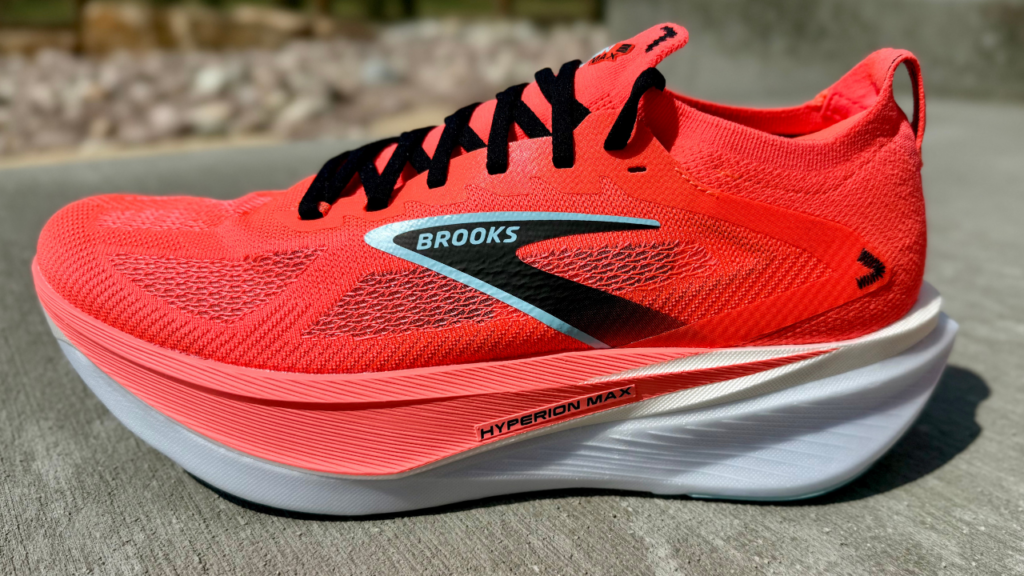
Is the Brooks Hyperion Max 3 worth $200?
Drew: I think the Brooks Hyperion Max 3 delivers sufficient value in terms of versatility, high-end, bouncy foam, and comfort to justify the $200 price point. I view its performance as very similar to the Asics Superblast 2 (also $200), and Asics can’t even keep that shoe in stock.
Annie: Assuming the fit works for you, I think the significant changes we get in materials and stack height here squarely put the Hyperion Max 3 in the super trainer category in a way some may have thought last year’s version didn’t quite achieve (though it absolutely met my own needs on that front). And the combination of those tech specs and performance generally means a price in the $200 range.
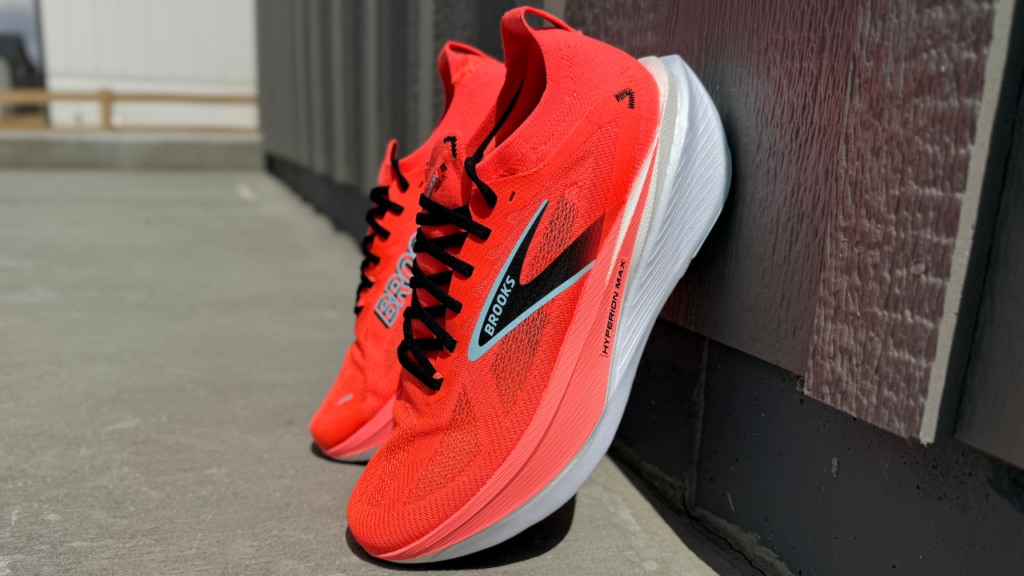
How to use the Brooks Hyperion Max 3
The Brooks Hyperion Max 3 is best used for long runs where extra plushness and bounce make a big difference. Whether helping to execute an uptempo section of a longer run or protecting the body from taking a pounding, the Hyperion Max 3 is a reliable companion for navigating training blocks for long-distance races.
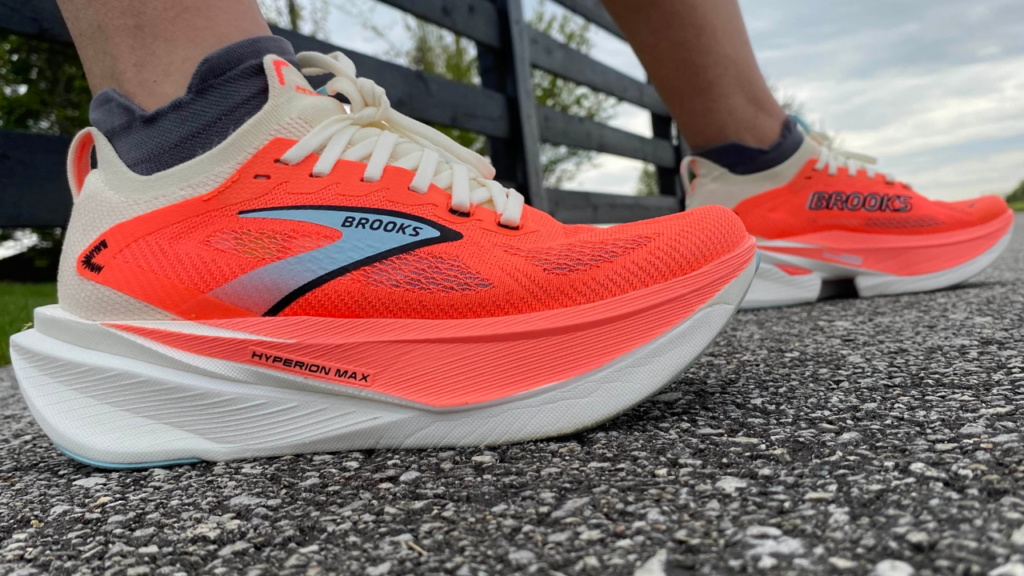
Brooks Hyperion Max 3 Summary
Drew: The Brooks Hyperion Max 3 lacks outsole durability and may not accommodate many wide-footers, but it’s a comfortable, plush, bouncy, and supportive long-run ready shoe that can help save the legs during long training blocks. It came in clutch for me during the late stages of my latest marathon build, and I used it across a ton of different runs when I wanted my body to be able to bounce back strongly after a hard day.
While I don’t love everything about it, the Hyperion Max 3 provides strong value and makes running feel just a bit easier and more fun.
Annie: The Hyperion Max 3 is a departure from the Hyperion Max 2 in many ways. But it’s a highly worthy evolution of the model that brings it more in line with the greater industry’s definition of a modern-day super trainer. It has a fit that will work on a case-by-case basis, doesn’t have the most durable outsole, and isn’t as lightweight as I’d like. But the Hyperion Max 3 will carry you comfortably through loads of long training miles with a smooth, bouncy ride.
For my part, I’d readily sacrifice several millimeters of stack height to shave off a half an ounce+ of weight, and I’d love to see the Hyperion Max 2’s upper (and especially its fit) plopped onto this (now magically shorter and lighter) midsole platform. But everything is a tradeoff, and I can still easily appreciate what Brooks has created in this third iteration of a model I’ve enjoyed each year.
How does the Author Run?
Drew Whitcomb (age 43, 6’6″ 200lbs): Runs daily with a once a week rest day. Runs a lot of miles due to testing needs and a growing affinity for long-distance races. Regularly competes in marathons, half-marathons, 10k, and 5k races.
Annie Keris (age 39, 5’0” 117lbs): Typically follows a “two days on, one day off” running routine. “On” days include daily miles, speed work, and long runs. An “off” day usually involves yoga and mobility/recovery work. Enjoys occasional racing but perhaps enjoys the training process even more. Gravitates most toward the half marathon distance, but ventures into the 10k and 5k as well. The marathon is thus far uncharted territory…
Disclosure
While Brooks did provide a pair of the Hyperion Max 3 to facilitate this review, the company had no involvement in this review, didn’t receive an advance look at it, and has not attempted to influence it.

